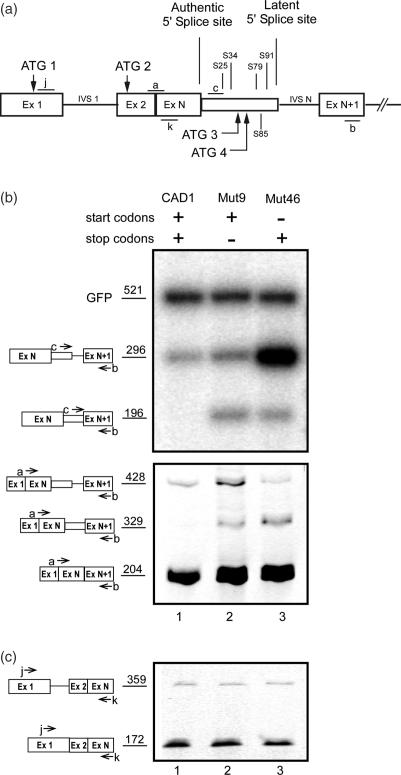Figure 1.
A start codon is required to sustain SOS. (a) A schematic representation of the CAD1 minigene. Start codons (ATG) and stop codons of reading frame 0 and +1 are drawn above and below the scheme, respectively. S designates a stop codon followed by a number that represents its distance in nucleotides from the authentic 5′ splice site. Open boxes, exons; lines, introns; narrow box, latent exon; a, b, c, j and k, PCR primers used to detect the respective splicing products. (b) Eliminating all four AUG codons from a wild-type CAD construct elicits latent splicing. Gel electrophoretic analysis of RT–PCR DNA fragments obtained from CAD mini genes. The presence of wild-type or mutated start and stop codons in each construct is marked by a + or −, respectively (see Supplementary Table 1S). Bands corresponding to precursor and latent CAD fragments amplified with primer pair c/b (upper panel) or corresponding to the precursor, authentic and latent mRNA amplified with primer pair a/b (lower panel) are indicated by schematic drawings on the left. (c) Splicing of IVS1 is not affected upon activation of latent splicing in CAD Mut9 and Mut46. The splicing pattern of IVS1 was analyzed by RT–PCR with primer pair j/k, targeted to sequences flanking IVS1.

